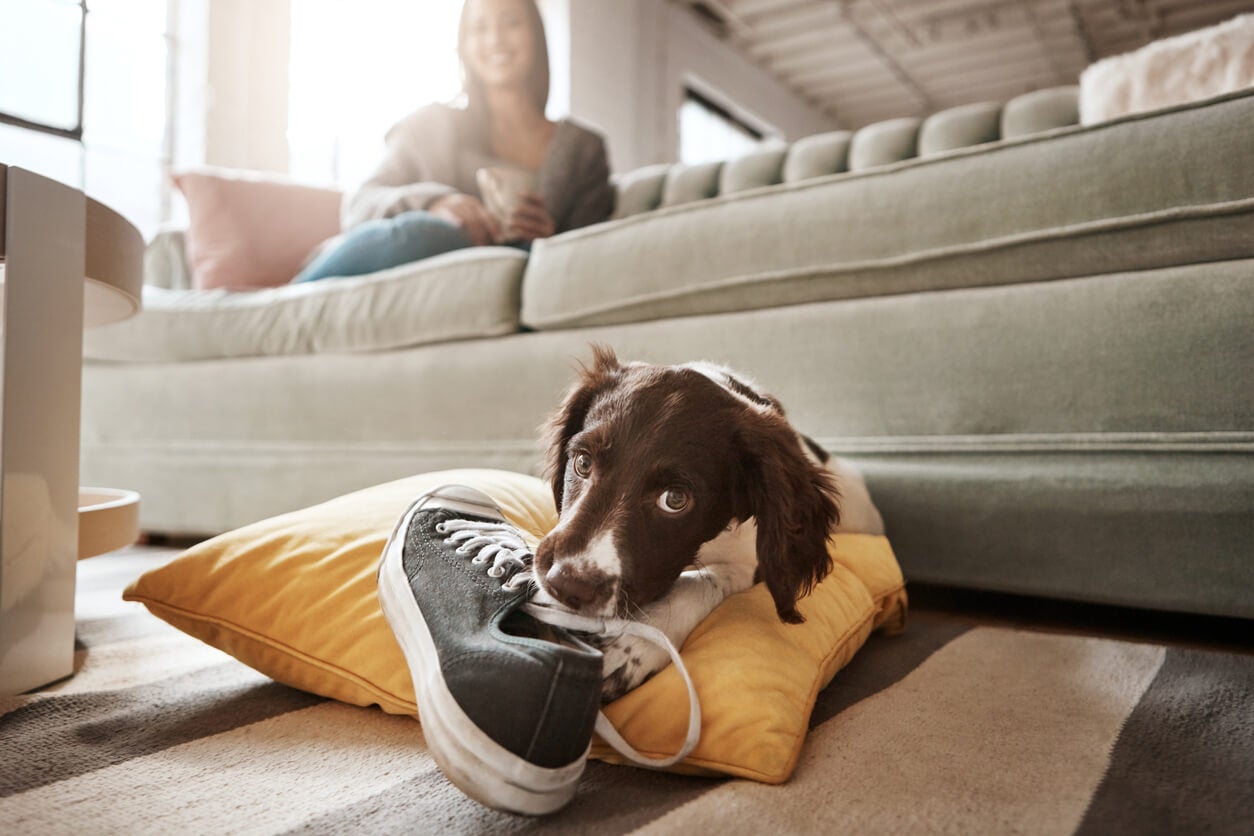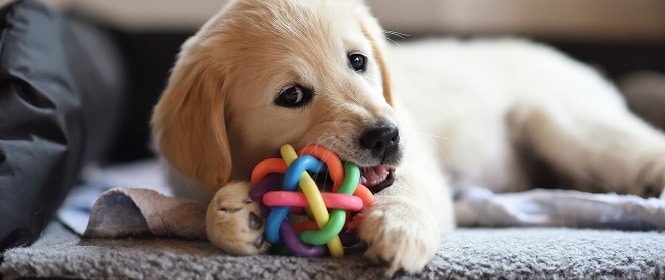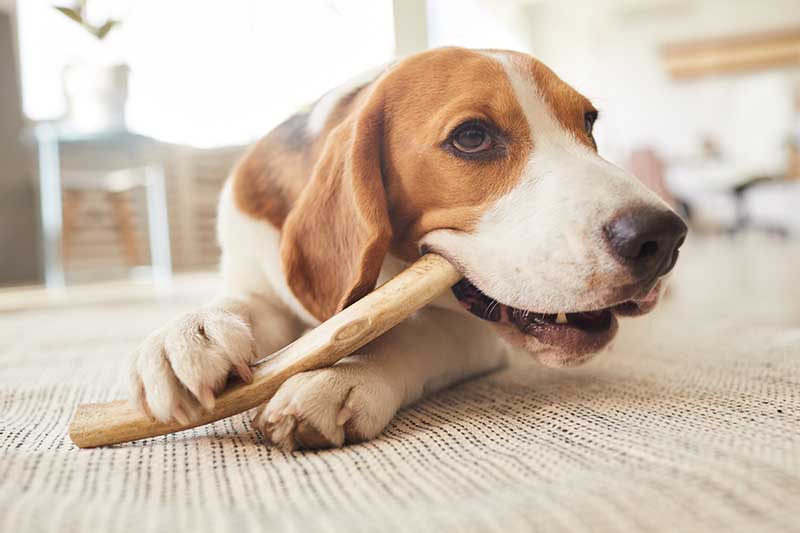Why Do Dogs Chew Everything? A Complete Guide to Understanding and Managing Chewing Behavior
Coming home to find your favorite shoes in tatters or your couch cushions shredded can be frustrating, to say the least. If your dog seems to chew everything in sight, you’re not alone. Chewing is a natural behavior for dogs, but when it turns destructive, it’s time to understand what’s driving it. From teething puppies to bored adult dogs, chewing can stem from a variety of causes, and knowing why is the first step to managing it.
In this comprehensive guide, we’ll explore why dogs chew everything, the science behind this behavior, and the potential risks to their health and your home. We’ll share real-life stories, common mistakes to avoid, and practical, vet-approved strategies to redirect your dog’s chewing habits. Whether you’re a new pet parent or dealing with a chronic chewer, this article will equip you with the tools to keep your dog—and your belongings—safe.

Table of Contents
- Why Do Dogs Chew Everything?
- The Science Behind Dog Chewing Behavior
- Health and Safety Risks of Excessive Chewing
- Common Mistakes Pet Owners Make
- Real-Life Stories: Dogs and Chewing
- Actionable Tips to Manage Chewing
- Recommended Products for Chewing Behavior
- Frequently Asked Questions About Dog Chewing
- Final Thoughts
Why Do Dogs Chew Everything?
Chewing is as natural to dogs as barking or wagging their tails. It’s a behavior rooted in their instincts and serves multiple purposes. Let’s dive into the main reasons why dogs chew everything in sight.
Teething in Puppies
Puppies chew to relieve the discomfort of teething, which typically occurs between 3 and 6 months of age. As their adult teeth push through, chewing helps soothe sore gums and encourages proper tooth alignment. Unfortunately, your furniture or shoes often become their teething toys!
Exploration and Curiosity
Dogs, especially puppies, explore the world with their mouths. Chewing allows them to investigate textures, tastes, and smells. This is why everything from socks to table legs can become a target for curious canines.
Boredom and Lack of Stimulation
A bored dog is a chewing dog. Without enough mental or physical stimulation, dogs may chew to entertain themselves or release pent-up energy. This is especially common in high-energy breeds like Border Collies or Huskies.
Stress and Anxiety
Chewing can be a coping mechanism for anxious or stressed dogs. Events like thunderstorms, separation from owners, or changes in routine can trigger destructive chewing as a way to self-soothe.
Instinct and Hunting Behavior
Dogs are descendants of wolves, and chewing mimics the act of tearing into prey. This instinctual behavior is hardwired, especially in breeds with strong hunting or retrieving drives, like Retrievers or Terriers.
Hunger or Nutritional Needs
In rare cases, dogs may chew non-food items due to nutritional deficiencies or hunger. For example, a dog lacking certain minerals might chew on objects like drywall or dirt, a condition known as pica.

The Science Behind Dog Chewing Behavior
Chewing isn’t just a random habit—it’s deeply rooted in a dog’s biology and psychology. Understanding the science behind it can help you address the behavior effectively.
Neurological Benefits of Chewing
Chewing releases endorphins, the “feel-good” chemicals in a dog’s brain. This natural reward system makes chewing inherently satisfying, whether they’re gnawing on a bone or your remote control. It’s why dogs often seem so focused when chewing.
Dental Health and Chewing
Chewing helps keep a dog’s teeth clean by scraping away plaque and tartar. In the wild, wolves chew bones to maintain oral health, and domestic dogs share this instinct. Providing safe chew toys can support dental hygiene while satisfying this need.
Stress Relief and Self-Soothing
Chewing acts as a stress reliever, similar to how humans might fidget or bite their nails. When a dog feels anxious—whether from separation, loud noises, or new environments—chewing helps them calm down by engaging their nervous system.
Breed-Specific Tendencies
Certain breeds are more prone to chewing due to their genetic predispositions. For example, Terriers were bred to dig and hunt, making them more likely to chew destructively if understimulated. Working breeds like German Shepherds may also chew to release excess energy.
Developmental Stages
Puppies chew more during teething, while adult dogs may chew out of habit or boredom. Senior dogs might chew less but could develop new chewing habits if they experience dental pain or cognitive decline.

Health and Safety Risks of Excessive Chewing
While chewing is natural, excessive or inappropriate chewing can pose risks to your dog’s health and safety, as well as your home. Here’s what to watch out for.
Dental Injuries
Chewing hard objects like rocks, sticks, or furniture can lead to broken teeth, cracked enamel, or gum injuries. These dental issues can be painful and require costly veterinary treatment.
Ingestion of Harmful Objects
Dogs that chew non-food items risk swallowing pieces that can cause choking, intestinal blockages, or perforations. Items like plastic, fabric, or small toy parts are particularly dangerous.
Toxic Substances
Some household items, like electrical cords or cleaning products, are toxic if chewed. Ingesting these can lead to poisoning, burns, or severe gastrointestinal issues.
Behavioral Escalation
Unaddressed chewing can escalate into compulsive behavior, especially if driven by anxiety or boredom. This can lead to other issues, like separation anxiety or aggression.
Property Damage
Beyond health risks, destructive chewing can damage your home, from ruined furniture to scratched floors. This can strain your relationship with your dog and lead to costly repairs.

Common Mistakes Pet Owners Make
It’s natural to feel frustrated when your dog chews something they shouldn’t, but some common reactions can make the problem worse. Here’s what to avoid.
Punishing Chewing After the Fact
Scolding your dog hours after they’ve chewed something won’t work—they won’t connect the punishment to the behavior. Instead, redirect them to appropriate chew toys in the moment.
Not Providing Enough Chew Toys
If you don’t give your dog safe, engaging chew toys, they’ll find their own—like your shoes. Offer a variety of textures and types to keep them interested.
Ignoring Underlying Causes
Chewing is often a symptom of boredom, anxiety, or teething. Ignoring these root causes can lead to persistent destructive behavior.
Leaving Tempting Items Accessible
Leaving shoes, remotes, or other tempting items within reach sets your dog up for failure. Dog-proof your home by keeping valuables out of reach.
Real-Life Stories: Dogs and Chewing
These stories highlight how chewing affects dogs and how owners have managed it successfully.
Case Study 1: Max the Labrador Puppy
Max, a 5-month-old Labrador, chewed through his owner Sarah’s couch cushions during teething. Sarah consulted a vet, who recommended durable chew toys like a KONG filled with peanut butter. She also increased Max’s exercise and used bitter spray on furniture. Within weeks, Max’s chewing was redirected to appropriate toys.
Case Study 2: Bella the Border Collie
Bella, a 2-year-old Border Collie, started chewing door frames when her owner, Jake, began working longer hours. A trainer identified boredom as the cause and suggested puzzle toys and more mental stimulation. Jake also enrolled Bella in agility classes, which curbed her destructive chewing.

Actionable Tips to Manage Chewing
Managing your dog’s chewing behavior requires patience and consistency. Here are vet-approved strategies to help.
Provide Safe Chew Toys
Offer a variety of durable, safe chew toys, like KONGs, Nylabones, or rope toys. Rotate them regularly to keep your dog interested.
Increase Exercise and Mental Stimulation
A tired dog is less likely to chew destructively. Provide daily walks, play sessions, and puzzle toys to keep your dog engaged.
Dog-Proof Your Home
Remove tempting items like shoes or cords from your dog’s reach. Use bitter sprays on furniture to deter chewing.
Address Anxiety or Stress
If chewing is stress-related, identify triggers like separation or loud noises. Use calming aids like Thundershirts or consult a vet for solutions.
Supervise and Redirect
When you catch your dog chewing something inappropriate, calmly redirect them to a chew toy and praise them for using it.
Consult a Trainer or Vet
For persistent chewing, work with a certified dog trainer or veterinary behaviorist to address underlying causes like anxiety or boredom.
Support Teething Puppies
For teething puppies, provide soft, safe chew toys or frozen washcloths to soothe their gums. Supervise closely to prevent destructive chewing.
Recommended Products for Chewing Behavior
These vet-approved products can help redirect your dog’s chewing and keep them engaged. Always consult your vet before introducing new items.
- KONG Classic Dog Toy: A durable toy for treat-dispensing. Available at Chewy.
- Nylabone Power Chew: A tough chew toy for aggressive chewers. Available at Petco.
- Zesty Paws Calming Bites: Natural chews for stress-related chewing. Available at Amazon.
- Outward Hound Puzzle Toy: Engages your dog’s mind to reduce boredom. Available at PetSmart.
- PetSafe Bitter Yuck Spray: Deters chewing on furniture. Available at PetSafe.
Frequently Asked Questions About Dog Chewing
Why does my dog chew everything?
Dogs chew due to teething, boredom, curiosity, stress, instinct, or nutritional needs. Identifying the cause is key to managing it.
Is chewing dangerous for my dog?
Chewing inappropriate items can lead to dental injuries, choking, or ingestion of toxic substances. Provide safe chew toys to minimize risks.
How can I stop my dog from chewing furniture?
Use bitter sprays, provide chew toys, increase exercise, and dog-proof your home to redirect chewing to appropriate items.
Do all dogs outgrow chewing?
Puppies often chew less after teething, but adult dogs may continue if bored or anxious. Training and stimulation can help.
When should I see a vet about chewing?
Consult a vet if chewing is excessive, compulsive, or accompanied by signs of illness, like eating non-food items (pica).
Final Thoughts
Chewing is a natural part of being a dog, but when it turns destructive, it’s time to take action. By understanding why dogs chew—whether it’s teething, boredom, or stress—you can address the root cause and redirect their behavior. From providing safe chew toys to increasing exercise and consulting professionals, there are many ways to keep your dog happy and your home intact.
With patience and consistency, you can turn your dog’s chewing habit into a positive outlet. Have tips or stories about managing your dog’s chewing? Share them with the Cute Pets Lovers community in the comments below!
